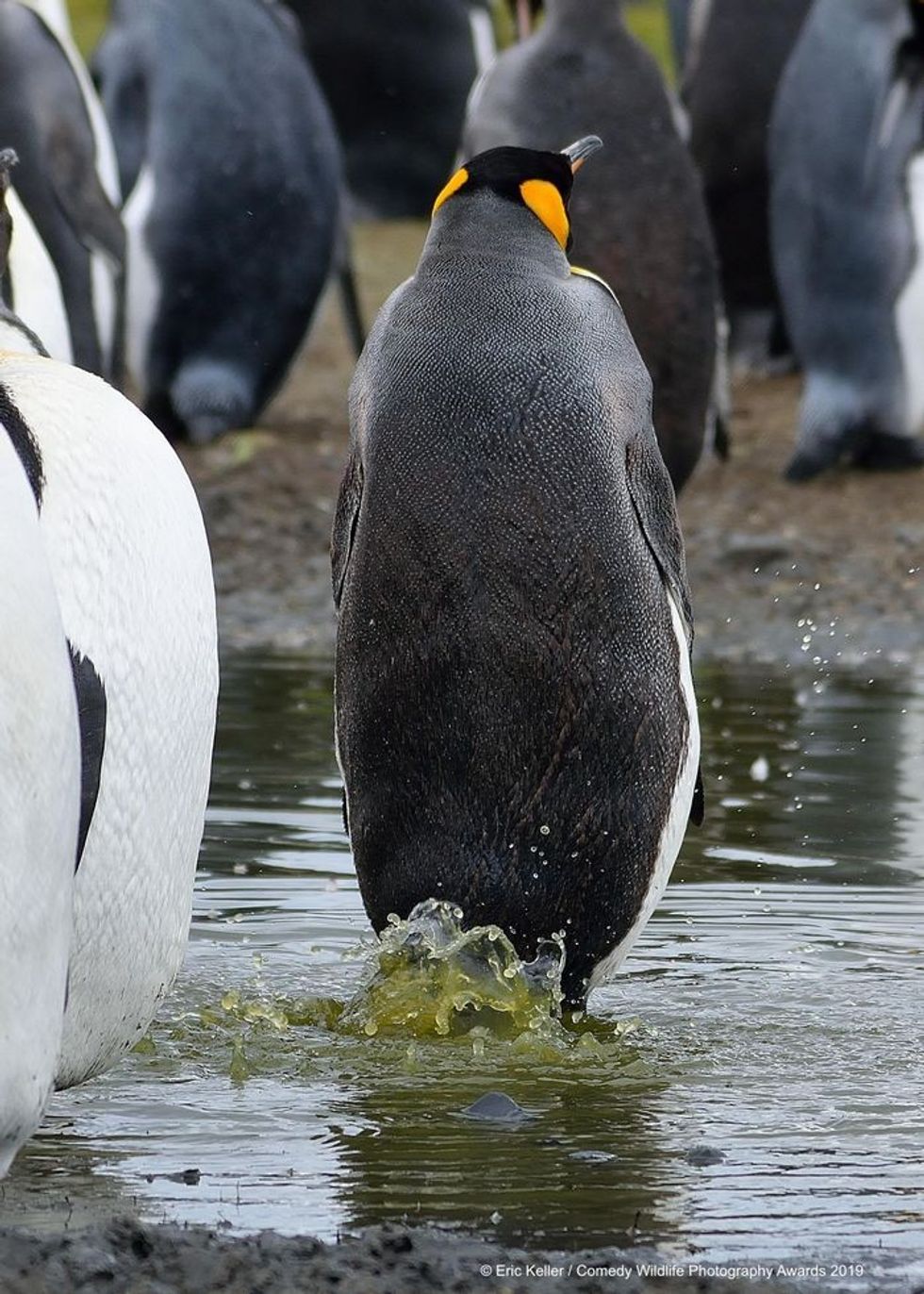Robert Bisson spent three decades scouring the globe for oil, gas, minerals, and water. Of those four resources, it's water that he sees as the most precious, especially for the marginalized economies of the world, which will endure the most trauma in what he describes as an imminent global water crisis. But all hope isn't lost. His company, EarthWater Global, was founded on the principle that there's a lot more water below the Earth's surface than we realize-we just need to be smart enough to find it.GOOD: On your website you describe an imminent "global water crisis." Does EarthWater Global have a sustainable solution to that crisis?Robert Bisson: It's certainly a part of a long-term solution. I'm not sure if it's the whole answer everywhere, but it's certainly contributory and will make a huge difference for a lot of areas in the world-the marginal regions of the world.G: What's the principle behind it?RB: The basic observation on which we built the company is that the Earth leaks.G: Okay, what does that mean?RB: It's not something that is necessarily obvious to non–exploration types, but the crustal materials that make up our continents are floating around the world on top of a sea of magma, floating on top of the Earth's mantle in a dynamic fashion-which is called plate tectonics or continental drift. The crustal materials keep banging into each other, scraping each other, and moving away from each other, as do the oceanic plates, which tend to bash into the continents. The rock is brittle and it breaks. So the stuff under our feet, instead of being solid bedrock, is quite often, in effect, shattered. If the rock is all busted up and full of fractures and faults, then fluids can run through it.G: We're with you, but how is this different from the traditional model?RB: The fundamental model that is almost always used [to depict groundwater] is two-dimensional; it shows a thin layer of surface water with some groundwater, underneath which is what's historically been referred to as impervious bedrock. What we're saying is that the impervious bedrock is a myth. If you compare [models] of the traditional water system to a yardstick, the total surface [water] and groundwater that is assumed to be there is just one inch. We're interested in the other 35 inches.G: So you're saying that there's a lot more water running below the surface of the Earth than people account for?RB: We're saying that the lion's share of water passes underneath all of these established, measured, or estimated surface and groundwater zones. Then it goes through a system that is invisible as it flows out into the ocean or evaporates somewhere-unnoticed, unmeasured, the classic tree falling in the forest and no one observing. There's a very large quantity difference.G: And these systems of underground fractures and water flow are what you call the megawatershed. You've written that, in many regions of the world, if people harness these megawatersheds, they'd have access to 10 to 100 times their current groundwater estimates, and that it's all sustainable and renewable. That sounds amazing, but don't a lot of scientists take issue with the concept?RB: It's been interesting over the past 30 years to see the shift in the way the traditional hydrologists, scientists, and engineers have responded to this. They used to argue that there was no water in the bedrock. But the exploration scientists we've been working with all knew there was water in the crust. We were part of the process back when I was working in oil in the 1960s, and doing off- and onshore mineral exploration in the 1970s. We kept encountering water that wasn't supposed to be there. I'd ask where it was coming from and the answer I'd get was that, oh, yes, there's water in the bedrock, but it's fossil water-finite, thousands of years old, undrinkable, and connected with the formation of the crust. But the water we found wasn't fossil, and it just kept on coming-and as answers weren't available in academia or literature, I started asking serious questions to my Earth-science team.
"We went out like good exploration geologists and started looking for real answers."G: What did you find?RB: We went out like good exploration geologists and started looking for real answers-not based on some theoretical definition of what a basin is or what a watershed is, but through observational science. We found water flowing over igneous rock at great distances [below the surface], but the rock is heterogeneous; it doesn't lend itself to one-dimensional mathematical models. Traditional assumptions are based on simple, homogeneous mathematical models, and don't reflect complex systems.G: So how do you harness these complex systems?RB: We combined satellite imagery with airborne and physical surveys, map surveys, and studies of geographic-information systems to find the parameters for the kind of environments that are favorable for water flowing from rainfall, collecting, and moving through the ground toward the sea or some deep basin. We're looking for vast systems for entire countries, and we've got to know how much water is going into these systems to make sure that it's renewable and sustainable. It's ultimately cheaper and has a lower carbon footprint than desalinization or traditional damming. Really, we have no carbon footprint.G: We know you've had success developing wells that produce millions of gallons of water a day in Trinidad and Tobago, but don't you also suggest that arid places be transformed into places that can support agriculture?RB: Absolutely. The greatest examples are the African deserts or the Middle East-we had success in Somalia before [its] civil war. And some areas we've looked at have spectacular opportunities. The amount of water going through the crust in the Himalayan countries, for example, far exceeds the amount of water going through the major rivers of Asia.G: That's hard to imagine.RB: It's about going underneath the crust. It's not just a bunch of downhill rivers to the sea. It is a complex natural system, but just because it's complicated, that doesn't mean that it doesn't exist.G: Can this be a boon to places affected by climate change?RB: Yes. I've been working in Africa since 1976, and I've seen wars, revolution, strife, and famine. My goal is to prove the point in one or two places with a high enough profile in the near term that leadership sees the promise. If the leaders and people from these countries see the promise, then, instead of looking hopelessly into the future at inevitable failure incurred by climate change and unaffordable alternatives, they see hope.
















 A young lion playing with an older animal
A young lion playing with an older animal A colorful bird appears to be yelling at it a friend
A colorful bird appears to be yelling at it a friend An otter appears like it's holding its face in shock
An otter appears like it's holding its face in shock Two young foxes playing in the wild
Two young foxes playing in the wild Two otters appear to be laughing together in the water
Two otters appear to be laughing together in the water A fish looks like it's afraid of the shark behind it
A fish looks like it's afraid of the shark behind it A bird appears to be ignoring their partner
A bird appears to be ignoring their partner A squirrel looks like it's trapped in a tree
A squirrel looks like it's trapped in a tree A bear holds hand over face, making it appear like it's exhausted
A bear holds hand over face, making it appear like it's exhausted A penguin looks like its trying to appear inconspicuous
A penguin looks like its trying to appear inconspicuous A young squirrel smells a flower
A young squirrel smells a flower An insect appears to be smiling and waving at the camera
An insect appears to be smiling and waving at the camera An otter lies on its side apparently cracking up laughing
An otter lies on its side apparently cracking up laughing Two monkeys caught procreating
Two monkeys caught procreating A young chimp relaxes with its hands behind its head
A young chimp relaxes with its hands behind its head A snowy owl appears to be smiling
A snowy owl appears to be smiling  A monkey holds finger to face as if it's lost in thought
A monkey holds finger to face as if it's lost in thought A turtle crossing the road under a 'slow' sign
A turtle crossing the road under a 'slow' sign A polar bear lies on its back like it's trying to hide
A polar bear lies on its back like it's trying to hide A rodent strikes human-like pose
A rodent strikes human-like pose
 An excerpt of the faxCanva
An excerpt of the faxCanva

 Robert Redford advocating against the demolition of Santa Monica Pier while filming "The Sting" 1973
Robert Redford advocating against the demolition of Santa Monica Pier while filming "The Sting" 1973


 Image artifacts (diffraction spikes and vertical streaks) appearing in a CCD image of a major solar flare due to the excess incident radiation
Image artifacts (diffraction spikes and vertical streaks) appearing in a CCD image of a major solar flare due to the excess incident radiation